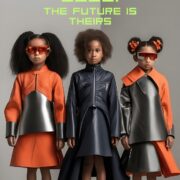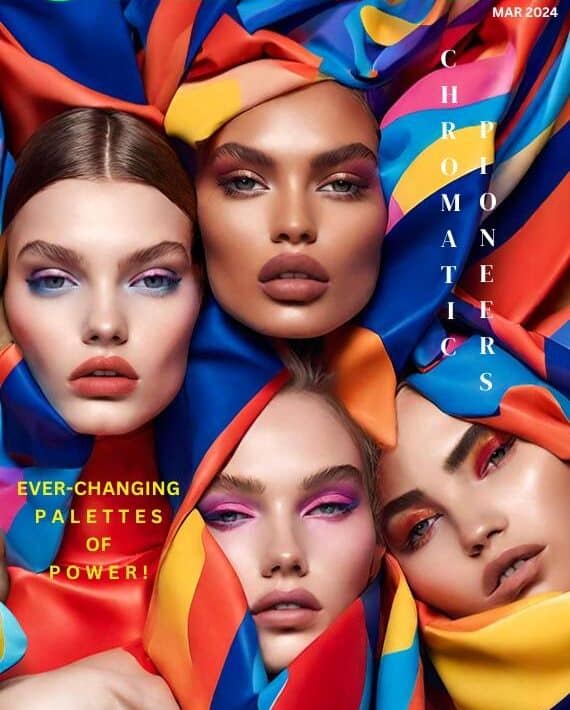From Ancient Greece to Paris 2024: The Journey of Olympic Fashion
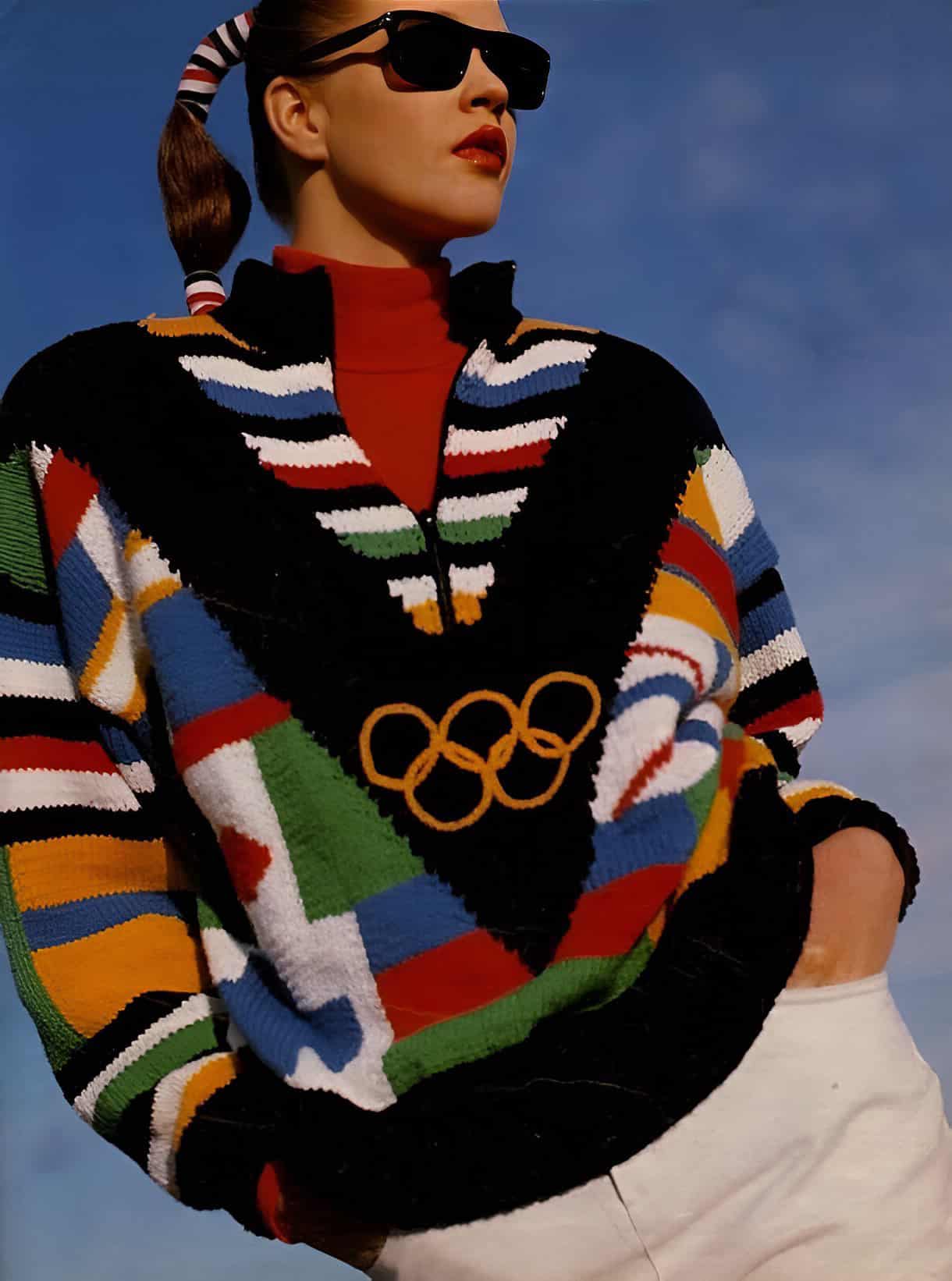
As the Paris Olympics came to an end earlier this month, we look back at the incredible outfits athletes wore this year and marvel at how Olympic fashion has evolved over the past few decades.
As we well know, sports and fashion have always gone hand in hand – if we don’t take Ancient Greece into account, where Olympians often competed in the nude as a tribute to God Zeus. Athletes honoured him by exhibiting their muscular physiques, while also intimidating their competitors- though another reason for athletes to compete naked was also the belief that a man could run faster without the hindrance of clothing.
Sprinter Florence Griffith-Joyner these days describes modern Olympic uniforms as “the epitome of fashion and function”, highlighting that they not only offer style and comfort but also provide technical benefits that can enhance an athlete’s performance.
To truly grasp the ethos of the Olympics, it’s essential to revisit their origins. Pierre de Coubertin, a French aristocrat, initiated the modern Olympic Games in 1896 in Athens, inspired by Ancient Greece. Initially, the event featured 241 white men, reflecting an elitist and exclusionary approach to sports, rooted in the traditions of English public schools. Over time, the Olympics grew into a global event, gradually adapting to social changes by allowing women in 1900 and expanding beyond the West by 1924. However, the International Olympic Committee often imposed barriers that limited participation for people of colour, women, and those from lower-class backgrounds. This history is evident in the evolution of Olympic attire, which reflects the broader culture of the Games.
Female athletes have had to challenge the limits of women’s athletic wear ever since they were allowed to take part in the Games, boldly abandoning corsets for more practical attire and protesting uniform requirements like white shorts.
Tennis player Suzanne Lenglen made waves at Wimbledon in 1919, when she competed with an ankle-baring skirt, a short-sleeved shirt with a low neck for the time and no corset. And so did former Olympic soccer player Brandi Chastain 80 years later. She famously tore off her jersey in a moment of sheer joy during the 1999 Women’s World Cup.
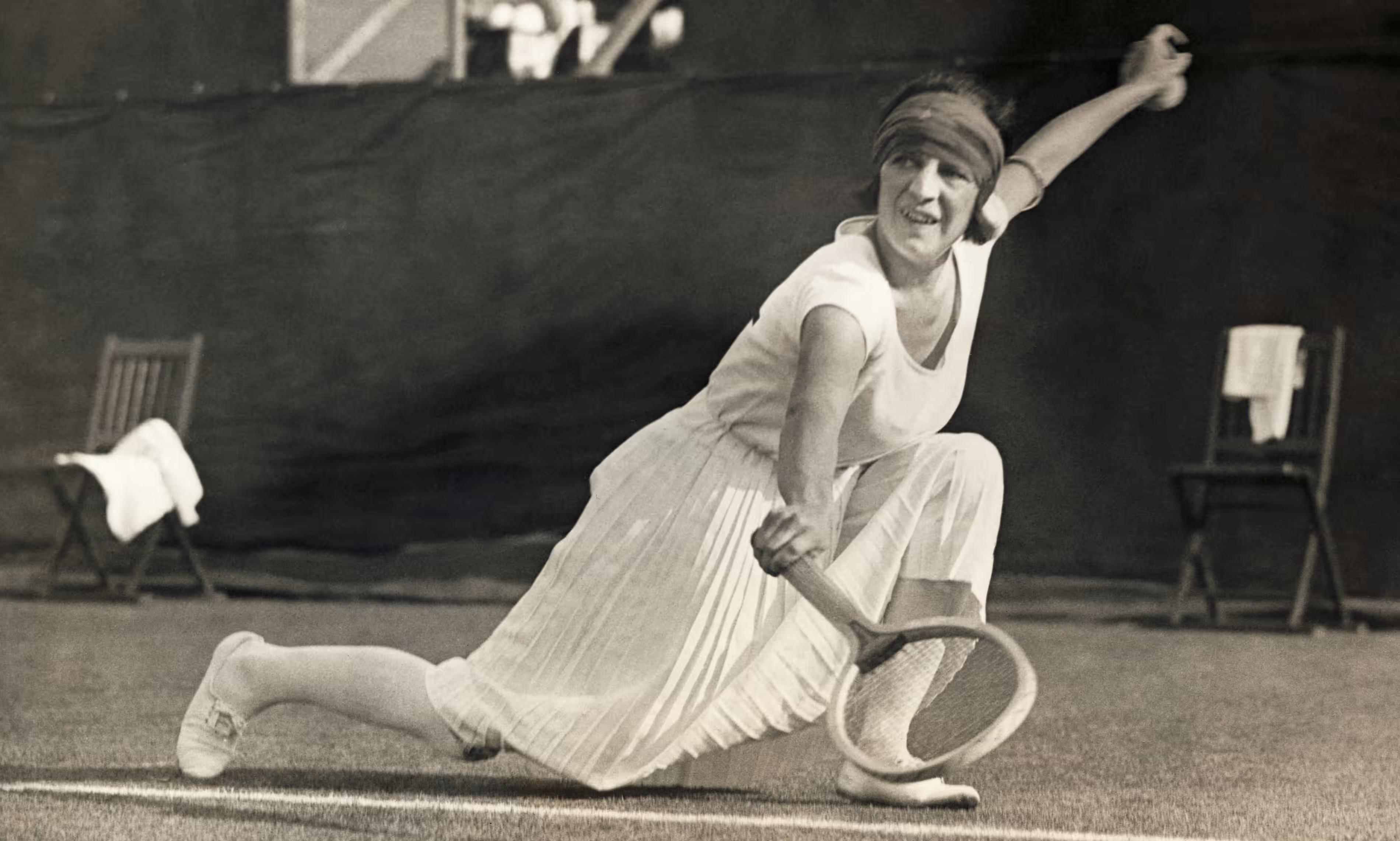
Suzanne Lenglen; Image Source: https://www.theguardian.com/fashion/2023/jun/11/court-couture-why-tennis-fashion-owes-it-all-the-suzanne-lenglen
The 1968 Olympics marked a turning point as Black athletes, like Tommie Smith and John Carlos, used their appearance to protest racial inequality, signaling the Games’ intersection with politics. Military-style uniforms for men and stewardess-like outfits for women during opening ceremonies reflected ongoing gender dynamics, with women having to fight hard for equal participation, including being allowed to run the marathon only in 1984.
The commercialization of the Olympics began in the 1960s, with brands like Adidas and Puma transforming athletic wear. By the 1980s, sponsorships became a significant aspect of the Games, leading to criticisms that the event had become overly commercialized, prioritizing profits over the original spirit of sportsmanship.
In 1992, Issey Miyake designed the uniforms for Team Lithuania’s debut as an independent nation at the Barcelona Olympics, following the Soviet Union’s dissolution. Miyake generously donated his designs, which were praised for their innovative use of materials and cultural elements, showcasing sportswear as a form of artistic expression.
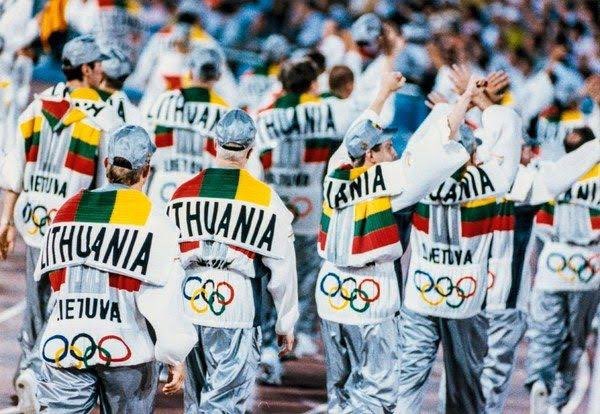
Issey Miyake For Team Lithuania At The 1992 Barcelona Olympics; Image Source: https://x.com/TheKimbino/status/1725656475442479458
This moment signaled a shift in Olympic fashion, leading to increased involvement from major fashion houses and sportswear brands in designing uniforms. This trend has since become a key aspect of the Games, offering brands significant global exposure and often boosting sales, while athletes benefit from high-performance gear that incorporates cutting-edge technology and cultural heritage.
This was certainly the case at this year’s 2024 Paris Olympics, where luxury and fashion took centre stage alongside athletic competition.
Big names in fashion, such as Ralph Lauren, Dior, Louis Vuitton, and Prada, have been heavily involved in designing uniforms and other gear for Olympic teams. Ralph Lauren, for instance, has been a longstanding partner with Team USA, continuing its tradition of blending classic American style with functional sportswear. Dior and Louis Vuitton, both part of the LVMH conglomerate, have also made significant contributions, with Louis Vuitton involved in providing luxury travel trunks for the Olympic medals.
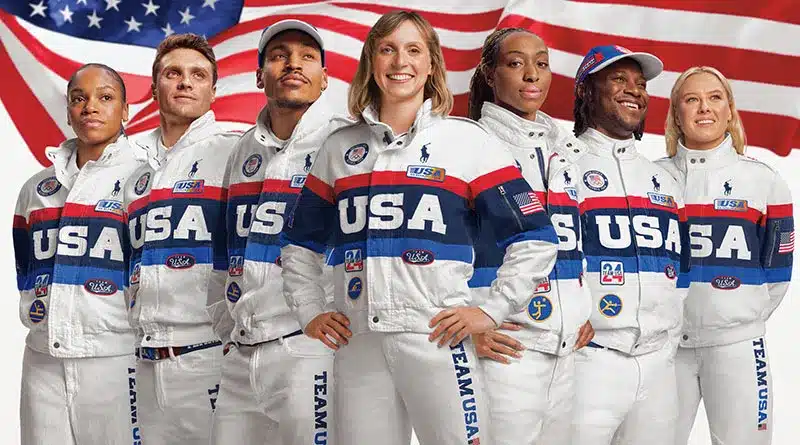
Team USA; Image Source: https://wwd.com/lists/olympic-uniforms-1236496242/
In addition to these well-established brands, there has been a rise in the participation of emerging designers and smaller, independent labels. For example, Stella Jean, a Haitian-Italian designer, created unique uniforms for Team Haiti, showcasing her commitment to cultural heritage and sustainability. Similarly, Actively Black, a sportswear brand founded in 2020, has designed the uniforms for Team Nigeria, reflecting both contemporary fashion and traditional Nigerian aesthetics.
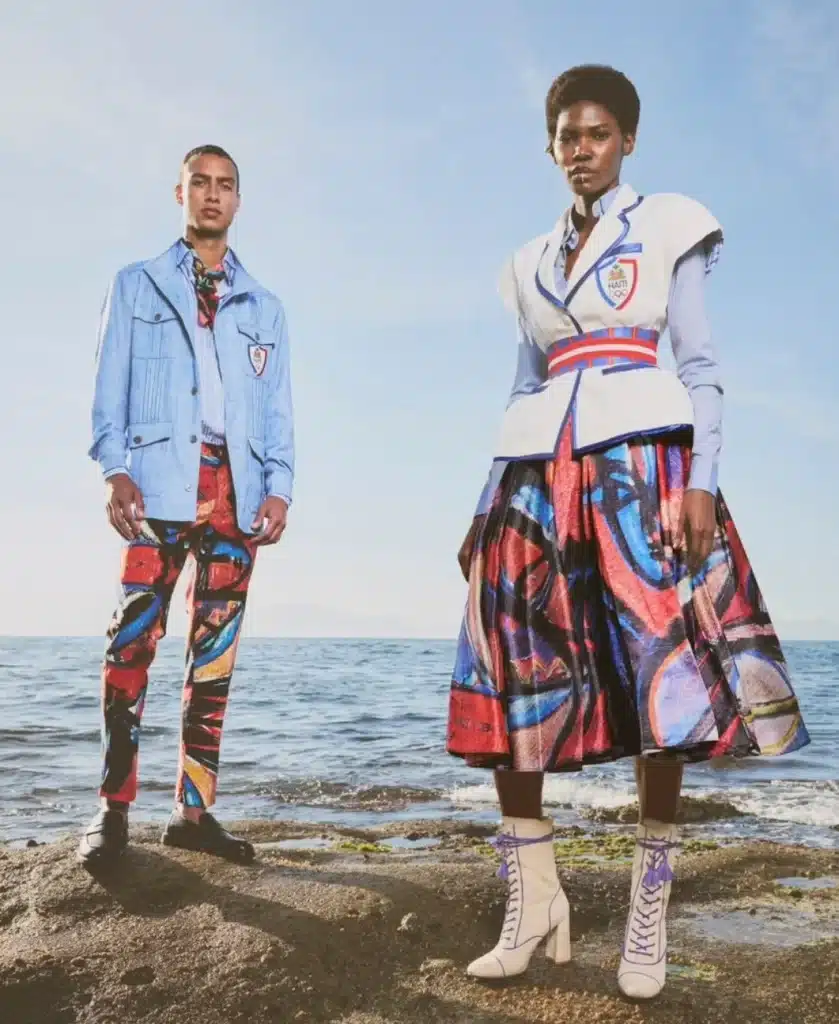
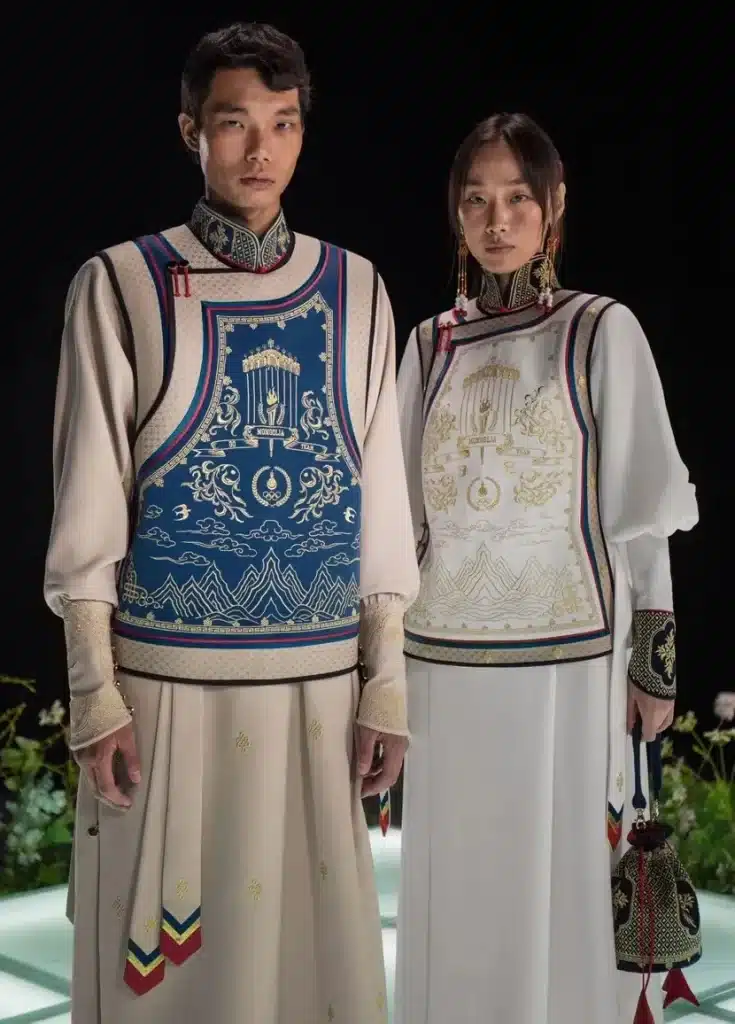
Left: Stella Jean For Team Haiti; Image Source: https://haitiwonderland.com/assets/images/upload/blog/haiti-le-triomphe-d-une-vision-1722125297.webp; Right: Team Mongolia; Image Source: https://www.vogue.com/article/best-olympic-uniforms-summer-2024-games
This growing involvement of both luxury and emerging brands in the Olympics not only highlights the intersection of fashion and sports but also underscores the increasing importance of cultural representation and sustainability in global events.
As we look to the future, the collaboration between fashion and sports is poised to grow even more dynamic, ensuring that each Olympic Games continues to be a symbol of both physical and creative triumph.

